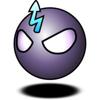On 21/11/2017 at 6:46 PM, Luckless said:
Situational advantage's and combined arms effects can go a long way to adding depth and strategy to a game.
This makes a lot of sense. I could add some kind of artificial bonuses to certain combinations of arms so that it's easier for the AI.
On 21/11/2017 at 6:50 PM, ferrous said:
I also don't know if you want to model morale as a separate mechanic. (In some ways, Morale can be rolled into HP, as they function similarly.
I want to simulate morale separately from hp. It will be similar to total war, but instead of the whole unit running away, I want to have individual soldiers break from the unit.
On 21/11/2017 at 6:50 PM, ferrous said:
A lot also depends on how much of a focus of your RTS do you want to be on the combat/tactics over the economic stuff. If one can't build units during a battle, that's pretty big.
There will be some kind of logistics management in battle, but nothing like a full economy. You can spawn more units during a battle, but only if those were built before hand (in a campaign mode).
On 21/11/2017 at 9:09 PM, Kavik Kang said:
A very simple thing you could do is have them get into a simple line formation 3 or 4 ranks deep. Not a set thing, but whenever you lasso a group they automatically form into a line/box and "act as one", as Russel Crowe would say. This way it also becomes about the composition of the force, so it doesn't feel as though it is entirely the individual units.
Should grouped units improve their battle effectiveness? I understand putting them in ranks and group so that they make a better melee, but how do you make it so that it affects the tactical play? Games like Cossacks make organized groups worse because they have a lesser DPS than a huge mass of unorganized units. How do you make that organised units have the advantage?
On 28/11/2017 at 6:30 AM, suliman said:
This depends on how detailed you want to make it. Remember more choices can muddy up the actual strategy a player can use/be aware of. Too many choices and players start to choose "middle ground options" since it's too messy to keep up with everything.
That's a very interesting point. As much as I want to add choices, I hate when units don't have specific enough roles that I can't tell which one to use.











